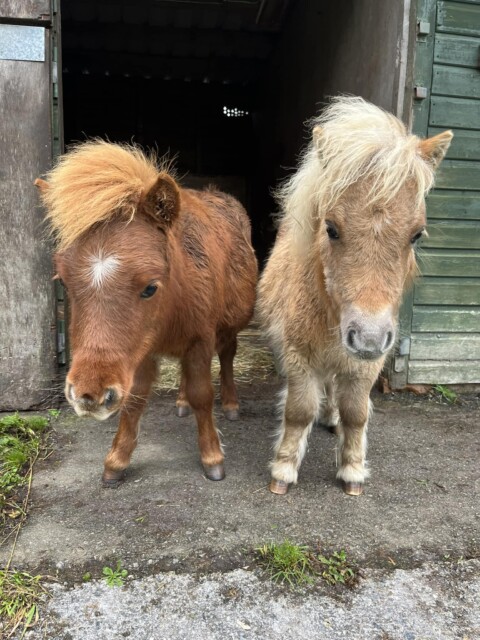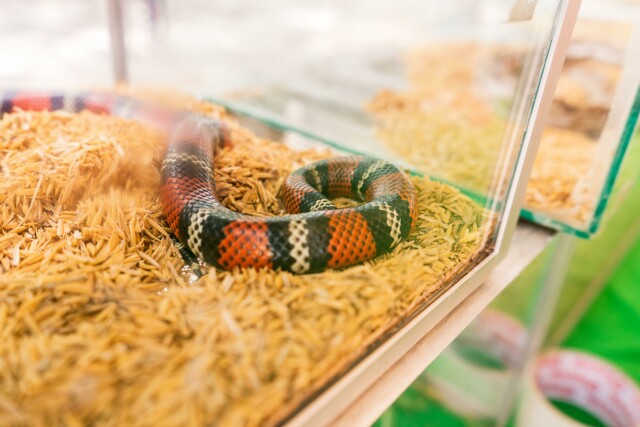HE is on a mission to help our pets . . . and is here to answer YOUR questions.
Sean, who is the head vet at tailored pet food firm tails.com, has helped with owners’ queries for ten years. He says: “If your pet is acting funny or is under the weather, or you want to know about nutrition or exercise, just ask. I can help keep pets happy and healthy.”
Sean helps a reader with a snake suffering from constipation
Sean McCormack, head vet at tails.com, promises he can ‘help keep pets happy and healthy’
Q) I THINK my corn snake Mike might be suffering constipation because normally he goes like clockwork.
There aren’t any swellings so I don’t think his digestive system is blocked.
Should I be concerned?
Tom Gardner, Middlesbrough
Sean says: It’s very hard to say without a physical examination.
Are you sure Mike hasn’t pooped in a hidden corner somewhere after his last meal and you just haven’t noticed?
Has he skipped a meal?
A lot of reptile problems relate to temperature, humidity and other environmental factors.
If you have his heating equipment on a thermostat then hopefully all has been OK in that regard.
But, if not, then the recent cold spell could have really slowed his metabolism and stopped him digesting or defecating.
Do you monitor Mike’s enclosure temperature daily? You really should.
Make sure he’s getting the correct thermal gradient.
For a corn snake, it should range from about 24C at the cool end to 32C at the warm end.
Some warm-water baths can help him hydrate and encourage him to poop if he has been a bit stuck on that front.
If he refuses to eat next time he’s due, a visit to a reptile-savvy vet is a good idea.
Q) SOMEONE recommended that even though I only have one rabbit it should be neutered for its health.
Is this correct?
Surely it’s better not to put them through a procedure unless they need it.
Kim Edwards, Reading
Sean says: First things first, it’s advisable to keep rabbits in pairs at least, as they are a highly social species and it’s not really fair to keep one on its own.
This means that, generally, neutering is a good idea as it will prevent boys fighting each other, or prevent unwanted litters with a pair of the opposite sex.
They don’t say “at it like rabbits” for nothing — things can really get out of control with unwanted litters.
Even with single females, neutering is beneficial as it can prevent cancers, specifically uterine adeno-carcinoma, which is common in older does.
Single males, or bucks, can also benefit from neutering by being less frustrated.
And for you there is a bonus that they will have less smelly urine and scent-marking.
So on balance, yes neutering is a good idea but, most importantly, so is a companion.
The Rabbit Welfare Association & Fund (rabbitwelfare.co.uk) is a great source of information on rabbits.
Q) HOW often should we take our pet hamsters to the vet for check-ups?
Is it like a cat and dog, and is an annual once over adequate?
Spencer Sharp, Dorchester, Dorset
Sean says: That would be a total of two visits then.
Sadly hamsters don’t live that long, three years would be an extraordinary age.
So realistically, they don’t need regular vet check-ups like dogs and cats (who we health-check and also give certain vaccinations yearly).
The advice is to bring them to the vet if you notice something out of the ordinary, especially as they get older.
Loss of weight, drooling and mobility issues can all be signs something is changing with their health.
And because they are prey species, they hide illness well.
So just get to know them and have them checked if they are acting out of character.
Star of the week
AS a therapy horse in training, Peanut the miniature Shetland pony helps vulnerable adults and children with special needs as well as visiting patients in hospital.
The ten-month-old works with her half-sister Wizzle, also ten-months.
 Peanut the miniature Shetland pony helps vulnerable adults and children with special needs
Peanut the miniature Shetland pony helps vulnerable adults and children with special needs
They belong to Charlotte Pine, 29, of Dartmoor Carriages in Devon.
Charlotte said: “Peanut is a chestnut-coloured ball of fluff that brings so much joy to everyone she meets.
“People who are non-verbal are able to communicate with her and Wizzle in their own way and they bring such joy to children with special needs.”
Tackle those pup problems early
NEARLY a third of puppy owners have considered giving up their pet due to “naughty behaviour”, new figures reveal.
And with rescue centres flooded with ex-pandemic pups, Lorna Winter, co-founder and head of training at www.zigzag.dog, has revealed the top five pup problems and how to nip them in the bud.
 New figures reveal that nearly a third of puppy owners have considered giving up their pet due to ‘naughty behaviour’
New figures reveal that nearly a third of puppy owners have considered giving up their pet due to ‘naughty behaviour’
Lorna said: “Many owners are not clear on what is and is not normal behaviour.
“This means millions of owners misidentify behavioural issues – and 27 per cent of Brits say they would consider giving up their pup because of them.
- Peeing on the floor: Take your pup out regularly and don’t reprimand them if they pee inside. If they are consistently told to go out when they need to pee, they will soon learn.
- Chewing: Keep valuable items out of reach and avoid chasing your pup if they have your stuff as they will only think this is a game.
- Barking: Do not punish barking as it is the only way your puppy can communicate. It may also be a sign it’s bored.
- Crying at night: Never leave your pup to just cry all night, as this can lead to separation anxiety in the future.
- Pulling on the lead: You must begin lead-walking early in the house/garden. Don’t leave it until they are allowed out on walks, as this is already too late.
Did you miss our previous article…
https://hellofaread.com/money/tesco-makes-a-major-change-to-supermarket-essential-and-shoppers-will-love-it/








